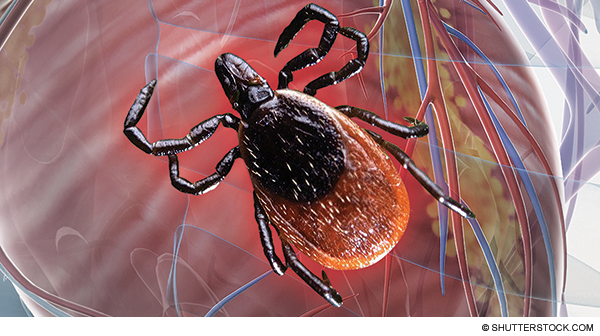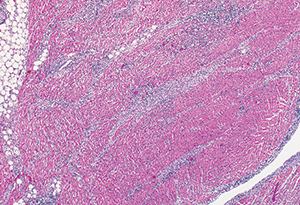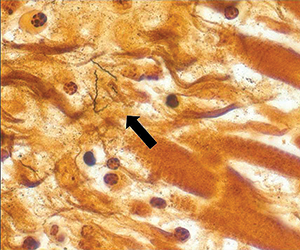
Explore This Issue
ACEP Now: Vol 33 – No 08 – August 2014CDC partners with ACEP to disseminate info about disseminated Lyme: critical update on Lyme carditis
Disclaimer: The findings and conclusions in this report are those of the author and do not necessarily represent the official position of the Centers for Disease Control and Prevention. Case-patient details have been changed to protect confidentiality.
The Case
On a late-summer afternoon, an otherwise healthy 32-year-old woman presented to an urgent care facility in New York complaining of episodic shortness of breath for the past week. She became quite anxious when these episodes occurred but couldn’t identify any precipitating activities or events. The patient reported vacationing in the Northeast during the previous two weeks and had frequented woody areas where she was exposed to ticks. She denied fever, rash, muscle pain, or joint pain. Providers in the urgent care facility diagnosed the patient with anxiety and prescribed clonazepam. No electrocardiogram (ECG) was performed.
The following day, the patient collapsed and died. Serum obtained at autopsy revealed a strong serologic response to infection with Borrelia burgdorferi spirochetes, the causative agent of Lyme disease. Examination of decedent heart tissue revealed characteristic histopathologic findings of Lyme carditis (see Figure 1). B. burgdorferi sensu stricto spirochetes were seen after Warthin-Starry stain of heart tissue (see Figure 2) and confirmed by immunohistochemistry and polymerase chain reaction.

Figure 1.
Above: Hematoxylin and eosin stain at 6.25x magnification of decedent heart tissue demonstrating characteristic interstitial perivascular lymphoplasmacytic pancarditis.

Figure 2.
BELOW: Warthin-Starry stain of decedent heart tissue at 158x magnification demonstrating Borrelia burgdorferi spirochetes (arrow).
Discussion
On Dec. 13, 2013, the Centers for Disease Control and Prevention (CDC) published a report describing three cases of sudden cardiac death associated with Lyme carditis in otherwise healthy young adults ages 26 to 38.1 While two of the case-patients described in the Morbidity and Mortality Weekly Report did not seek care before their deaths, one did but was not diagnosed with or treated for Lyme disease.
Lyme disease is a zoonotic, multisystem illness caused by the spirochete B. burgdorferi, which is transmitted by certain Ixodes spp ticks. Approximately 30,000 cases are reported to the CDC each year, primarily from high-incidence states located in the northeast (Connecticut, Delaware, Maine, Maryland, Massachusetts, New Hampshire, New Jersey, New York, Pennsylvania, Rhode Island, and Vermont) and north central (Minnesota and Wisconsin) United States.2 The actual number of annual infections is estimated to be tenfold higher; Lyme disease is the most common vectorborne disease in the United States.3
Pages: 1 2 3 4 | Single Page





No Responses to “Risk of Sudden Cardiac Arrest from Lyme Carditis Underscores Need for Timely Diagnosis, Treatment”